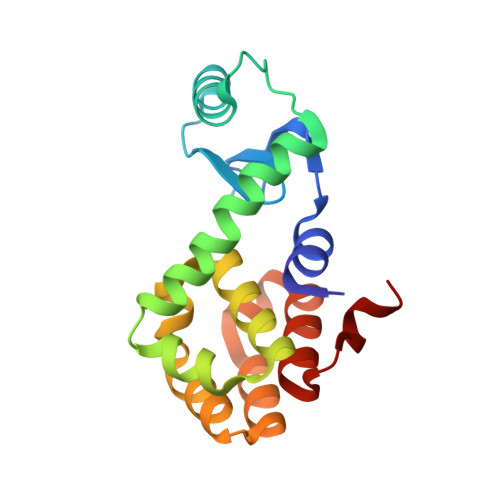An approach to crystallizing proteins by synthetic symmetrization.
Banatao, D.R., Cascio, D., Crowley, C.S., Fleissner, M.R., Tienson, H.L., Yeates, T.O.(2006) Proc Natl Acad Sci U S A 103: 16230-16235
- PubMed: 17050682
- DOI: https://doi.org/10.1073/pnas.0607674103
- Primary Citation of Related Structures:
2HUK, 2HUL, 2HUM - PubMed Abstract:
Previous studies of symmetry preferences in protein crystals suggest that symmetric proteins, such as homodimers, might crystallize more readily on average than asymmetric, monomeric proteins. Proteins that are naturally monomeric can be made homodimeric artificially by forming disulfide bonds between individual cysteine residues introduced by mutagenesis. Furthermore, by creating a variety of single-cysteine mutants, a series of distinct synthetic dimers can be generated for a given protein of interest, with each expected to gain advantage from its added symmetry and to exhibit a crystallization behavior distinct from the other constructs. This strategy was tested on phage T4 lysozyme, a protein whose crystallization as a monomer has been studied exhaustively. Experiments on three single-cysteine mutants, each prepared in dimeric form, yielded numerous novel crystal forms that cannot be realized by monomeric lysozyme. Six new crystal forms have been characterized. The results suggest that synthetic symmetrization may be a useful approach for enlarging the search space for crystallizing proteins.
Organizational Affiliation:
California Nanosystems Institute, University of California, Boyer Hall 259, P.O. Box 951570, Los Angeles, CA 90095-1570, USA.















